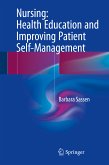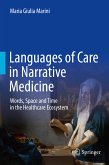This new edition describes the latest advances in health education and patients' self-management, addressing core questions such as: How can you motivate a patient to adopt a healthier lifestyle, and how can you support their self-management? Though there is a broad consensus within the nursing profession on the importance of health promotion and the promotion of self-management, nursing professionals often struggle with the underlying theoretical and practical aspects involved, as well as the right type of intervention to use and how to evaluate the results.
The book departs from concepts of health. In the first chapters, it examines health at the micro-, meso- and macro-level, combined with epidemiological health indicators. The following chapters focus on prevention, health promotion and self-management, while also broadly discussing prevention.
The book then turns to the development and purpose of, as well as plans for, health promotion and health education. The Intervention Mapping protocol is the starting point, addressing questions such as how to motivate a patient to other, healthier behavior. Subsequently, the field of health promotion is extended to disease prevention, patient education and self-management. On the basis of patients' needs, the book describes methods and interventions to promote self-management in detail. Self-management and chronic health problems are also highlighted, along with the patient's social network in connection with self-management and eHealth. Lastly, the book explores the relationship between nursing and health promotion, as well as disease prevention, diagnoses, interventions and care results.
Additionally, this edition includes two trainings on 'Promoting the self-management of the patient ' and on 'What is the role of the nursing professional in promoting self-management of the patient?'. This book is intended for bachelor and master courses for nursing professionals and is linked to the CanMeds competencies of health promoters and reflective evidence-based working professionals.
The book departs from concepts of health. In the first chapters, it examines health at the micro-, meso- and macro-level, combined with epidemiological health indicators. The following chapters focus on prevention, health promotion and self-management, while also broadly discussing prevention.
The book then turns to the development and purpose of, as well as plans for, health promotion and health education. The Intervention Mapping protocol is the starting point, addressing questions such as how to motivate a patient to other, healthier behavior. Subsequently, the field of health promotion is extended to disease prevention, patient education and self-management. On the basis of patients' needs, the book describes methods and interventions to promote self-management in detail. Self-management and chronic health problems are also highlighted, along with the patient's social network in connection with self-management and eHealth. Lastly, the book explores the relationship between nursing and health promotion, as well as disease prevention, diagnoses, interventions and care results.
Additionally, this edition includes two trainings on 'Promoting the self-management of the patient ' and on 'What is the role of the nursing professional in promoting self-management of the patient?'. This book is intended for bachelor and master courses for nursing professionals and is linked to the CanMeds competencies of health promoters and reflective evidence-based working professionals.
Dieser Download kann aus rechtlichen Gründen nur mit Rechnungsadresse in A, B, BG, CY, CZ, D, DK, EW, E, FIN, F, GR, HR, H, IRL, I, LT, L, LR, M, NL, PL, P, R, S, SLO, SK ausgeliefert werden.
Es gelten unsere Allgemeinen Geschäftsbedingungen: www.buecher.de/agb
Impressum
www.buecher.de ist ein Internetauftritt der buecher.de internetstores GmbH
Geschäftsführung: Monica Sawhney | Roland Kölbl | Günter Hilger
Sitz der Gesellschaft: Batheyer Straße 115 - 117, 58099 Hagen
Postanschrift: Bürgermeister-Wegele-Str. 12, 86167 Augsburg
Amtsgericht Hagen HRB 13257
Steuernummer: 321/5800/1497
USt-IdNr: DE450055826
Bitte wählen Sie Ihr Anliegen aus.
Rechnungen
Retourenschein anfordern
Bestellstatus
Storno









